Ultimate Guide to
Instructor-led Training
Discover the emerging trends in ILT, an award-winning methodology you can follow to deliver effective training sessions, and the technology you’ll need.
Inside you will find:
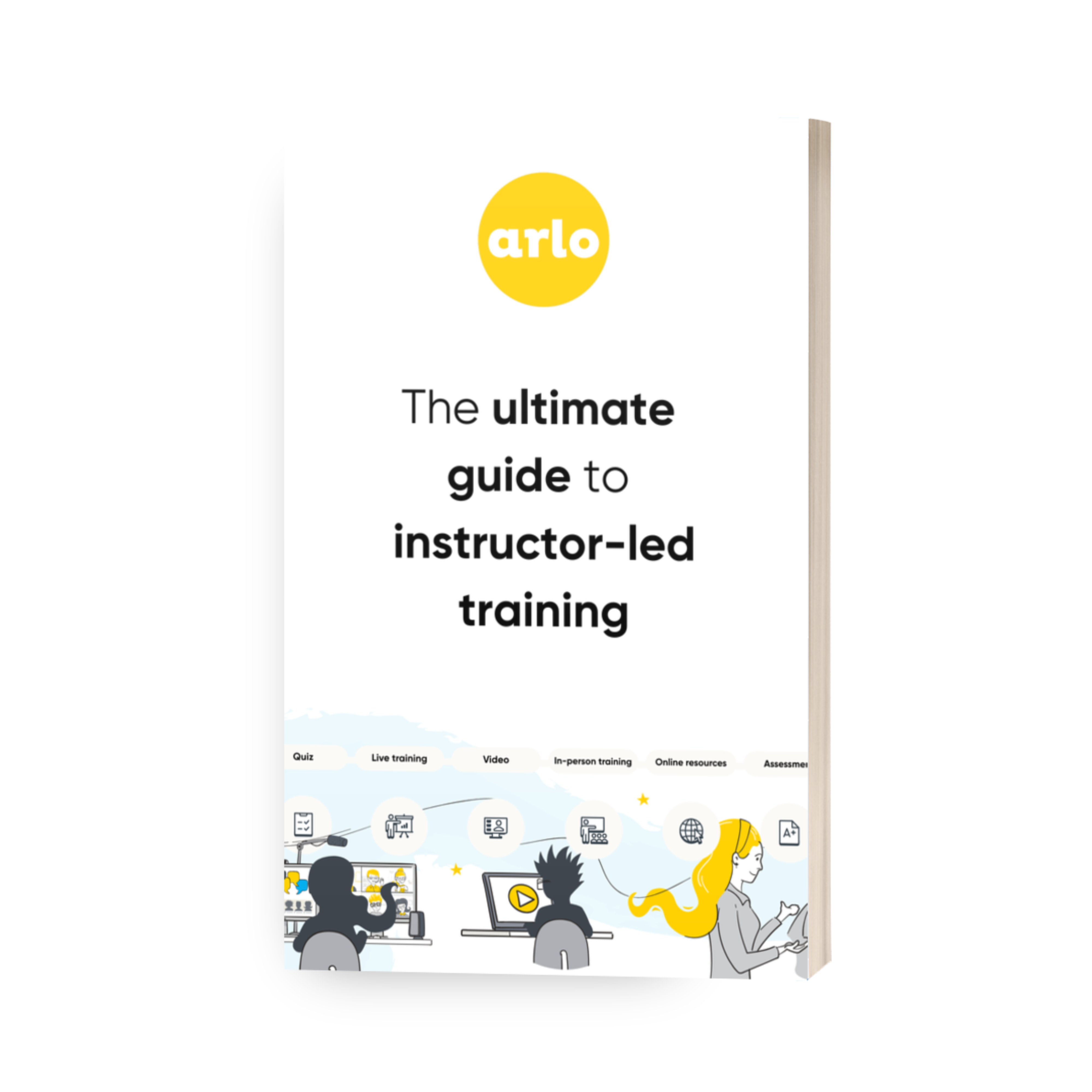
Introduction
- What does instructor-led training look like today?
- What are the current trends shaping its role as a training delivery format?
- How can training providers and individual facilitators deliver great instructor-led training?
In this guide to Instructor-Led Training, we look to answer these questions and give you expert advice on how you can deliver top-quality instructor-led training in 2025
Whether you’re a training provider, with a team of facilitators, an individual facilitator, or part of an in-house training team, you’ll find useful tips and insights that you can implement.
The guide has been created in collaboration with Tammy Banks, Co-Founder of the award-winning training company Transform Your Training. Transform Your Training is a socially focused company that delivers equitable, unforgettable, and impactful workplace training to frontline professionals.
The guide shares interview-style insights from Tammy herself, as well as snippets from her international best selling book, FREE resources and more from Transform Your Training. We also share key insights from other industry thought-leaders, findings and evidence from international research and surveys, real data from our network of Arlo training providers and much more.
Throughout her career, Tammy has championed change both operationally and strategically. She is on a mission to help people recognize that quality, values-led training has the power to transform teams, organizations, and lives. As an accomplished thought leader, Tammy frequently delivers keynote speeches and has presented two TEDx talks.
Tammy Banks developed the multiple award-winning training methodology and the Train the Trainer qualification, Training 4 Influence. Her book, Transform Your Training, is an Amazon bestseller.
Chapter 1
What Is Instructor-Led Training, and What Are the Emerging Trends?
Table of contents
Before jumping into specifics, it’s important to start with a clear, working definition of instructor-led training.
The leading training industry publication TrainingIndustry.com have a great definition of the term that captures what instructor-led training (ILT) is:
Instructor-led training (ILT) is any type of training facilitated by an instructor, either in a classroom setting or online. ILT allows delegates and instructors/facilitators to interact and discuss the training material individually or in a group setting.

The Emerging Trends in Instructor-Led Training
Instructor-led training has evolved substantially over the past five years or so.
Before the pandemic, instructor-led training and elearning were the two dominant training delivery methods but were largely treated as separate entities.
Virtual instructor-led training wasn’t particularly widespread, and while blended programs existed they weren’t a primary choice for providers in terms of the training they deliver.
When COVID-19 struck, instructor-led training providers were forced to transition their training to virtual formats. This shift required training providers to adapt their existing processes and, in many cases, develop new workflows to maintain the same quality of training under the new conditions.
By 2022, as the pandemic subsided, the industry began returning to a semblance of normality, with in-person, face-to-face instructor-led training programs resuming.
However, the impact of the pandemic and the shift to online training led to several ongoing trends that define the current state of instructor-led training, including:
- An increased comfort among facilitators and delegates with delivering or receiving ILT virtually.
- Training providers now offering clients the choice between in-person or virtual training for the same course/program.
- A growing demand from clients for in-person instructor-led training.
- Concerns among training providers about the rise of low-cost AI tools, such as ChatGPT, and their potential impact on ILT and the broader training industry.
Let’s take a look at each in more detail:
Increased Comfort Around Virtual-Instructor Led Training
The transition to virtual instructor-led training as the primary delivery method for training providers during the pandemic, along with the growing number of delegates learning in this format, has led to an increased sense of comfort and confidence among both facilitators and delegates.
Many facilitators now have extensive experience delivering live online training, and training providers have responded to the demand by adapting existing programs and solidifying virtual training as part of their core service offerings.
Delegates are also more comfortable with training being offered in a virtual format, and customers now expect providers to offer relevant training virtually—particularly when their team is spread across multiple locations or when in-person training is not viable for other reasons.
Another interesting finding that Tammy has noticed within her own training business is the growing positive feedback that their online training programs are receiving:
“We gather customer feedback annually and calculate an overall feedback rating for our organization. In 2023, for the first time, the feedback for our online training matched the high ratings of our in-person training programs.”
Training Providers Choosing the Delivery Method That Meets the Needs Learners
With it now being common practice for training providers to offer both in-person and virtual training, clients are able to choose their preferred delivery format. And training providers are able to inform clients what approach is best for their specific scenario, and needs of their delegates.
This flexibility in approach allows clients to select the most effective approach for their delegates while giving training providers the opportunity to scale their offerings and become more client-centric.
“It’s fantastic to be able to offer both in-person and virtual training options for customers. For example, if a customer and their delegates are dispersed or in-person training isn’t economically viable for them we are still able to deliver impactful training to them”.
Often though, the decision on what the most effective delivery method isn’t black and white.
For many types of courses, some modules are best taught in person, others are more suitable for live online delivery, and some can be self-paced through elearning. For training providers this means delivering training in a blended format, and tailoring a program to the needs of their client.
Tammy explains a recent example of how Transform Your Training had to do exactly this for a client:
“We recently worked with a physiotherapy company that has offices all over the country. They have managers for all their offices, and they also have clinical leads. And they wanted to enroll all of them in our leadership training program.
So, to effectively deliver the program we decided to completely tailor the structure of the course to their needs. Everyone comes together face to face in London for a full day, and then after they have fortnightly 90 minute live online sessions.
Alongside the live sessions delegates have their own elearning modules to work through, and the elearning modules directly feed into what they’re going to learn in the live sessions. The facilitator has access to a portal where they can see how each delegate is progressing through the self-paced modules.
Delegates are also part of an online community where they can discuss what they’re learning with one another and collaborate. We then have another face to face session at the end of the course to celebrate everyone completing the course”.
Many of our customers here at Arlo are using the same approach as Tammy, giving their customers the choice and flexibility to select the training delivery method that works best for their needs and delegates.
If you’re considering doing the same, make it as easy as possible for your customers to choose their preferred training format when signing up for one of your programs, and clearly display the delivery methods you offer.
You can see how this looks when a customer goes to sign up for a course in the images below.
In the first image, you can see one of Transform Your Training’s courses on the Criminal Justice System.
The page clearly displays the delivery methods the course is offered in, and it’s nice and easy for customers to register their interest, and check how many spaces are left.
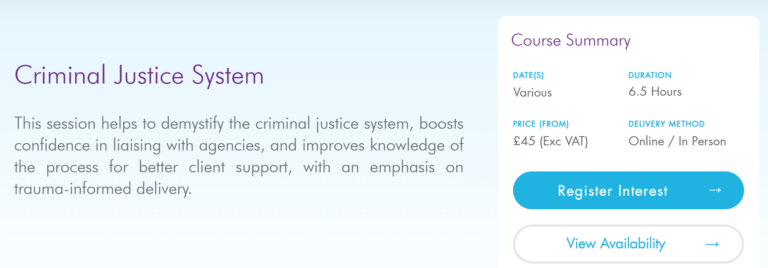
In this second image, Communispond, a leading U.S.-based provider of communication skills training, does the same thing.
They make it easy for customers to see the delivery formats for the course and to learn more about the corporate training programs Communispond offers, as well as how to get in touch with them.
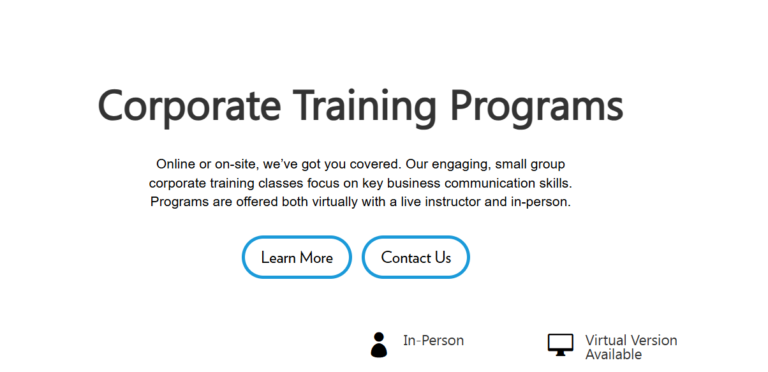
Growing Demand for Instructor-Led Training
Here at Arlo (from our own internal data), we’ve seen a gradual increase in the amount of face-to-face training our customers are delivering. There has been approximately a 10% increase when comparing data from October 2022 to October 2024.
Tammy has observed a similar trend in her own training business and attributes the rise to the limitations of elearning in delivering results for delegates in certain situations.
“We’re seeing a rise in instructor-led training bookings as more customers recognize its impact on their teams. While elearning offers many benefits, customers are finding that it often falls short in delivering the results they are looking for, especially for complex topics where strong knowledge retention is required for the training to have an impact.”
The Impact of AI on Instructor-Led Training
From a training facilitator’s perspective, there are some concerns about AI and its impact on instructor-led training as a discipline.
Tammy notes that, in her conversations with other training providers and facilitators, the current feelings and thoughts around AI are similar to those when eLearning started to gain popularity.
At the time, the sentiment was that this new form of learning could handle all types of training, that it would be cost-effective, and that the need for live instructors would diminish. However, this didn’t materialize.
“Facilitators are beginning to get nervous about AI. Customers are testing AI to see what it can and can’t do and are beginning to wonder if it can handle their training requirements for them. For example, can it handle our training requirements for us?
I remember at the time customers had thoughts, such as, can this new cost-effective form of learning handle all our training needs? And do we even need instructors or facilitators anymore?”.
While elearning is, of course, very popular and effective for the right topics, it didn’t lead to the ‘death’ of instructor-led training. The design and delivery of effective training are much more nuanced than relying on a ‘one size fits all’ method for all situations.
And for many subjects, the knowledge, experience, and wisdom that an experienced facilitator offers simply can’t be matched in a self-paced virtual environment.
To emphasize this message, and stand out as a facilitator at a time when AI is making it easier and quicker to produce training content, Tammy recommends leaning heavily into your point of difference:
“You have to remember your point of difference. You are human, you have human responses, use this to connect with delegates. If you know your subject, have the experience, have walked the walk, then you have nothing to worry about”.
As in many professions though, AI is having an impact in training, and facilitators and learning & development professionals are starting to experiment with the technology in their daily work.
The latest research suggests that AI is assisting learning professionals with everything from creating content to making strategic decisions. Donald H. Taylor and Egle Vinauskaite, two leading voices in the L&D field, recently surveyed thousands of L&D professionals from approximately 100 countries for their latest AI in L&D: Intention and Reality report to see how they are using AI.
Donald and Egle found that 20.6% of respondents identified “creating learning content faster” as their primary use case for AI.
Other common AI use cases within L&D from the report are:
- Using AI to improve efficiency and reduce L&D costs
- Data analysis to support decision-making
- Using AI to deliver more personalized learning
- Using AI to improve the quality of learning design
These answers align with what we are hearing from training providers here at Arlo.
In our recent webinar, How to Harness GenAI for Your Training Business, Arlo customer and President of the leading communication skills training company Communispond, Scott D’Amico, shared insights on how training providers can leverage AI in their businesses and daily operations
Some of the key AI applications Scott covered are:
Course Creation: How you can take existing training resources and adapt them into different formats, such as elearning modules.
Marketing and Promotion: Using generative AI to draft email campaigns, social media posts, and promotional content for upcoming courses.
Customization and Personalization: Using generative AI to tailor training content to specific audiences.
Improving Manual Processes Through Automation: How training providers can use workflow automation tools like Zapier to make training workflows more efficient.
Check out the webinar below 👇
Chapter 2
Delivering Effective Instructor-Led Training
The second part of this guide focuses on how training providers and facilitators can deliver effective instructor-led training in light of its evolution.
The tips in this section come from the award-winning Training 4 Influence methodology, a training methodology formulated by Tammy and her fellow Transform Your Training co-founder, Faye Fox.

The Training 4 Influence Methodology
The Training 4 Influence methodology emerged from the rapid growth Tammy and her business partner experienced after launching Transform Your Training (now Transform Your Training) in 2016.
They founded the company to address service delivery needs they felt were unmet in their previous roles as operational and strategic managers in the criminal justice sector.
Following the launch, Tammy and Faye began receiving exceptional feedback on their training sessions, and demand quickly outpaced their availability.
Intrigued by the success of their training, they analyzed thousands of sessions they had delivered to understand why delegates responded so positively.
The result of their analysis was the creation of the Training 4 Influence methodology—a four-part framework designed to ensure every training session contributes to the goal of transforming delegates’ lives.
The four parts to the methodology are:
Expert – Training should be conducted by a facilitator who possesses relevant operational experience as well as the necessary soft skills to help delegates achieve their learning objectives.

Engaging – Each training session should be equitable and engaging, meaning it should be accessible and tailored to accommodate different learning styles.
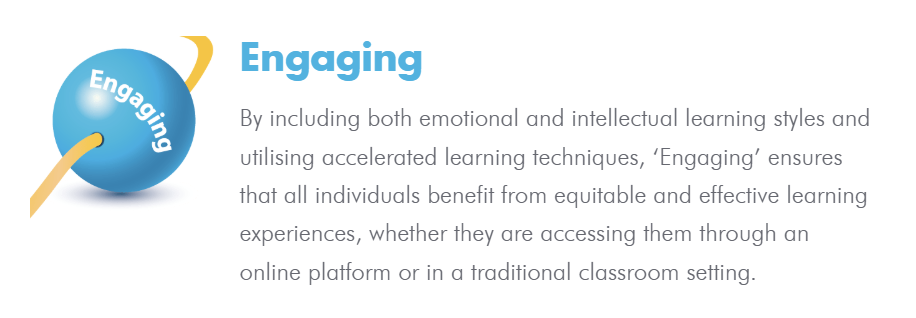
Tailored – Training should be tailored to both the delegates and the client. The training should consider the delegates’ learning objectives, be relevant to the specific scenarios they encounter, and include case studies and stories that can be applied to real-life situations.
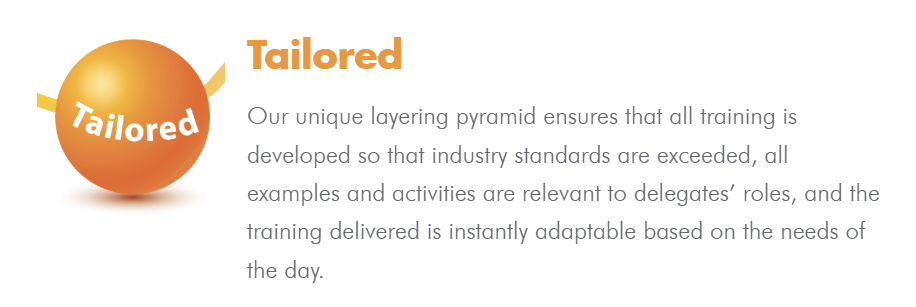
Values – Training should be intertwined with a facilitator’s personal values and reflect the values of the client to whom they are delivering the training.


Part One: Expert
“When an operational expert delivers a session, they bring more than just experiences and examples to the table. They also bring a true understanding of the sector, the customer group, and how to facilitate the learning objectives in a way that will influence a delegate’s daily work.”
The first concept, “expert,” refers to the idea that training should be delivered by facilitators who are knowledgeable but, more importantly, possess relevant operational experience related to the subject matter they are teaching.
Training delivered by a facilitator with operational expertise helps avoid the negative feelings delegates often experience when training is not conducted by someone with such expertise.
For example, it prevents feelings that the training wasn’t specific to their sector, that they were left with many unanswered questions, or that they were left with a general sense of dissatisfaction.
The experience for a delegate is completely different when they take a course led by a facilitator with extensive experience in the type of complex needs they work with and expertise in the subject area. In such cases, the facilitator understands the context in which the delegates operate, is aware of the pressures they face, and ensures the course feels tailored to their needs.
Operational experience doesn’t necessarily mean that a facilitator has worked for years in the same role as a delegate. Within the context of the Training 4 Influence methodology, an operational expert within a sector is someone who has one or more of the following:
- Undertaking a similar role to the delegates, either voluntarily or in a paid capacity
- Working in a connected field
- Working with the customer group
- Having real-life experience with the customer group
- Having personal connections with the customer group.
In addition to experience, the facilitator should possess relevant skills in training delivery that complement their professional expertise.
Specifically, they should have skills to motivate and inspire their delegates, along with the ability to deliver training in a way that provides meaningful results—most often by equipping delegates with real, practical skills that they can apply in whatever endeavor the training is intended for.
Some of these key soft-skills are:
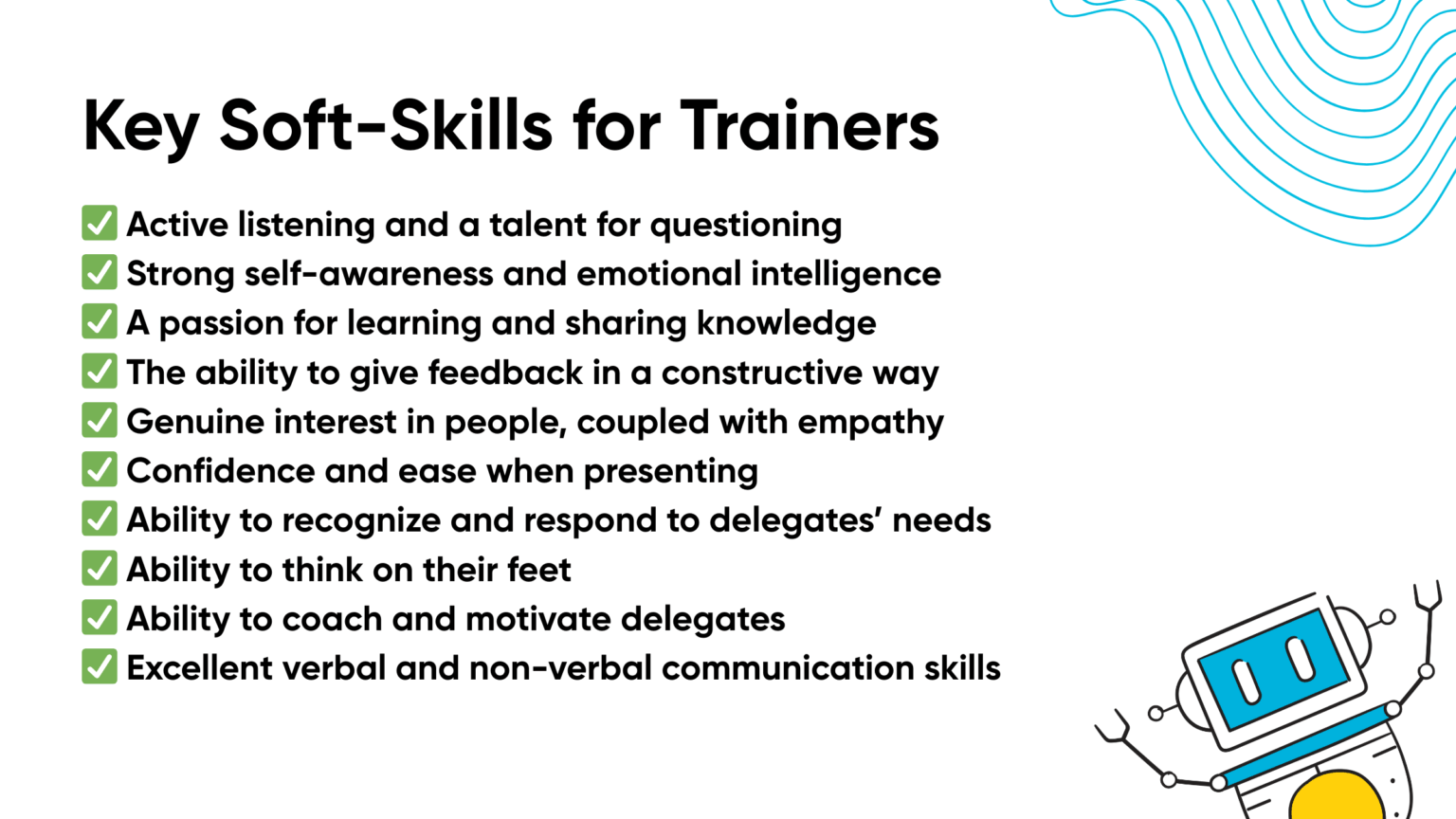
“Being an operational expert isn’t about having all the knowledge; it’s about true experience, understating and empathy. Facilitators need to be inspirational and engaging. They need to speak the delegates’ language and demonstrate their belief in the subject they are facilitating.”
“In the sectors Taye deals with, many quality assurers make it mandatory for frontline workers to attend training sessions every three years. That means that we could have extremely experienced and knowledgeable workers in the session alongside brand-new people on their induction.
With our knowledge and experience of the sector, we can facilitate the session effectively so everyone’s learning needs are met, encouraging the more experienced delegates to share the knowledge they have amassed over the years.”
If you’re a facilitator looking to improve your operational expertise, there are a few things you can do:
Learn from Experts in Your Field:
Seek out other facilitators who excel in your subject area. Identify the skills they have that you don’t and create a plan to acquire those skills. Whenever possible, shadow their training sessions to observe their methods.
Engage with Thought Leaders:
Follow industry thought leaders and professionals in connected fields. Stay informed by engaging with their publications, insights, and updates on the latest practices and trends.
Gain Practical Experience in Delegate Roles”
Actively participate in roles similar to those of your delegates, either through short-term assignments or voluntary work.
Collaborate Across Connected Fields:
Work alongside professionals in industries related to your training subject. These collaborations can expand your understanding of how your content applies in real-world scenarios.
Engage with the Customer Group Directly:
Spend time interacting or working with the customer group in their environments. This exposure enables you to develop more targeted and relevant training materials.
For training providers, Tammy recommends specifically seeking out facilitators, or candidates who could become facilitators, with relevant operational expertise during the hiring process:
“At Taye, we don’t expect our facilitators to be qualified or experienced trainers when they apply to us. It’s great if they are, but it’s not a prerequisite. What we do want them to have is current operational experience with vulnerable people or people with complex needs. We want them to share values and principles similar to our own in relation to the work that they do.”
Part Two: Engaging
The second part of the Training 4 Influence Methodology is Engaging. In this context, engaging means the training delivered by a provider and their facilitator should ensure that participants enjoy the session, remain motivated throughout, and have their learning needs met so they feel confident about the subject and the implementation of their new knowledge and skills.
To achieve these objectives you should make sure your training:
- Meet the learning styles of delegates
- Strike a balance between theory and practice to drive real results
- Utilize engagement principles such as accelerated learning within each training session.
Here are some ways you can achieve these objectives:
Tip One: Have an Understanding of Different Learning Styles
Learning styles describe the various ways individuals prefer to receive and process information.
One of the most well-known learning style theories is the VAK model (Visual, Auditory, and Kinesthetic), developed by Neil D. Fleming in the 1980s. According to this model, people favor certain approaches to learning, which can be broadly categorized into three types:
Visual delegates
Delegates who prefer to see and use visual aids to understand and remember information. They benefit from diagrams, charts, pictures, and written instructions. As the name suggests, visual delegates often find they can recall information better when it is presented visually.
Auditory delegates
Delegates who absorb information best through listening. Auditory delegates often benefit from lectures, discussions, and audio recordings, and they may find it helpful to read aloud or engage in conversations about the material.
Kinesthetic delegates
Delegates who process information best through hands-on experiences and physical activities. They prefer to engage in activities, experiments, and movement to understand and remember information. Kinesthetic delegates often benefit from building models, role-playing, or using gestures to reinforce learning.
Tip Two: Practically Incorporate Learning Styles into Your Training Sessions
Sitting down and thinking about how to make every training session you run applicable doesn’t need to be an overwhelming process. It can be manageable when you break it down into smaller, manageable chunks.
One simple way of doing this is to have a checklist of the different activities you will include in a training sessions, and the learning style the activity maps to.
For example:
- Visual: Slides, infographics
- Auditory: Group discussions, podcasts
- Kinesthetic: Hands-on activities, role-playing
Creating a checklist for this can be very simple, and you can use tools like ChatGPT to make it as simple or as complex as you need.
A good starting point is to have four columns: Activity, Learning Style, Purpose, and Notes:
Activity: This column identifies the specific task or exercise you’ll be using
Learning Style: This column indicates which learning style the activity supports
Purpose: This column explains the goal of the activity, such as building rapport, introducing concepts, or applying theory, helping to connect the activity to its intended outcome.
Notes: This section provides additional details, such as tips for execution, materials needed, or considerations to make sure the activity is effective.
Activity
Icebreaker Activity
Slide Presentation
Group Discussion
Role-Playing
Case Study Analysis
Wrap-Up Reflection
Learning Style
Kinesthetic
Visual
Auditory
Kinesthetic
All
Auditory, Visual
Purpose
Build rapport and warm up participants
Introduce key concepts
Explore ideas collaboratively
Practice real-life scenarios
Apply theory to practical situations
Summarize learning and gather feedback
Notes
Use movement or creative thinking tasks
Include diagrams, pictures, and minimal text
Use open-ended questions to spark dialogue
Include clear roles and objectives
Provide clear instructions and debrief
Use verbal summaries and a visual checklist
Tammy explains how she uses a checklist:
“What you really want to be thinking is ‘How can I make this learning engaging, so that it’s as easy as possible for people to retain essential knowledge and they are motivated to do so?
When I’m developing training, I follow a process. It’s really important to have a process and a checklist to make sure everything meets a certain standard. We all get busy, and we all try to do our best, but often people just sit down, dump all their knowledge, do a bit of research, and then break it up to put on some slides. They might add a couple of activities, but that’s not enough.
Having a process means asking yourself critical questions: Have you included the relevant legislation or guidance learners need? Is the session suited to different learning styles? How long is the session? How many slides have you prepared?
Being that critical friend to yourself or following a structured process with a checklist will keep you on track.”
Tip Three: Have a Quality Control and Feedback Process in Place
During the design and planning phases of a training session or course, having a feedback process in place can help ensure your training sessions are suitable for different learning styles, and as engaging as they can be.
This can be between two facilitators, e.g., when one facilitator designs a course and another reviews it to provide constructive feedback and fresh perspectives, as Tammy explains:
“There should be a second pair of eyes on every course or training you design. At Transform Your Training we actually have three sets of eyes, and every single set of eyes finds something different that another trainer may have missed”.
Tip Four: Implement Accelerated Learning Principles
Another effective way to make every training session engaging and ensure it meets different learning styles is to implement accelerated learning principles.
Accelerated learning involves incorporating practices that engage all of a participant’s senses—sight, hearing, smell, touch, and taste—to improve information retention.
For example, think about how babies and young children learn. They explore their environment by picking up objects, touching them, moving parts around, putting toys in their mouths, bringing them to their noses, and shaking them to discover the sounds they make.
A child often learns how the different parts of a toy work before their parents do. That’s because children learn instinctively and naturally, whereas we, as adults, often lose or forget this ability, relying instead on rote learning and other more traditional methods.
These abilities are still present, however, as is our capacity to learn and store memories through our senses. Ensuring your training is designed to stimulate these abilities in your delegates is key to avoiding dull and uninspiring training sessions.
Tammy recommends thinking ablut an unispiring class or couse you’ve personally taken as a starting point on what not to do:
“Think about a class or course you attended where the training moved too slowly, was too dry, or involved too much sitting and listening to the trainer. How quickly did you become bored? Did you find yourself yawning, looking at your watch, or perhaps even having to consciously force yourself to stay awake?”
“In that scenario, did you find it difficult to learn? To retain the knowledge? Did you switch off and miss some of what the trainer was saying? If the whole course was like this, how much do you think you learned? That’s the kind of training I so fervently want you to avoid, which is why I fully embrace the use of accelerated learning techniques.”
“Now consider the opposite of that scenario. The facilitator delivers the training in a way that stimulates your senses, encouraging you to connect with and create your own learning, have fun, and learn instinctively.”
Tip Five: Applying Accelerated Learning Principles
In practice, applying accelerated learning principles means designing and delivering training in a way that appeals to people’s senses, stimulating their desire to learn.
When this is achieved, delegates enter a mindset of wanting to learn rather than learning because they were told to attend the training course. In this state, they absorb information without being consciously aware of everything they are taking in.
Accelerated learning in practice involves creating an environment where people actively draw learning from you and each other, rather than simply having your experience imparted to them. This shift can be subtle but powerful.
The first step is to encourage delegates to involve their senses. This can be as simple as encouraging them to:
- Eat while they learn.
- Touch different fabrics or toys as you deliver a session
- Drawing or coloring in to engage the delegates’ conscious mind, which opens up the unconscious mind to absorb more information.
- Having music playing while a session is in progress
- Helping delegates learn by smell and association e.g. making different scented pens available.
Once you’ve put those tips into place you’ll be in a good position to start seeing the benefits accelerated learning can bring.
Here are some additional tips Tammy recommends keeping in mind:
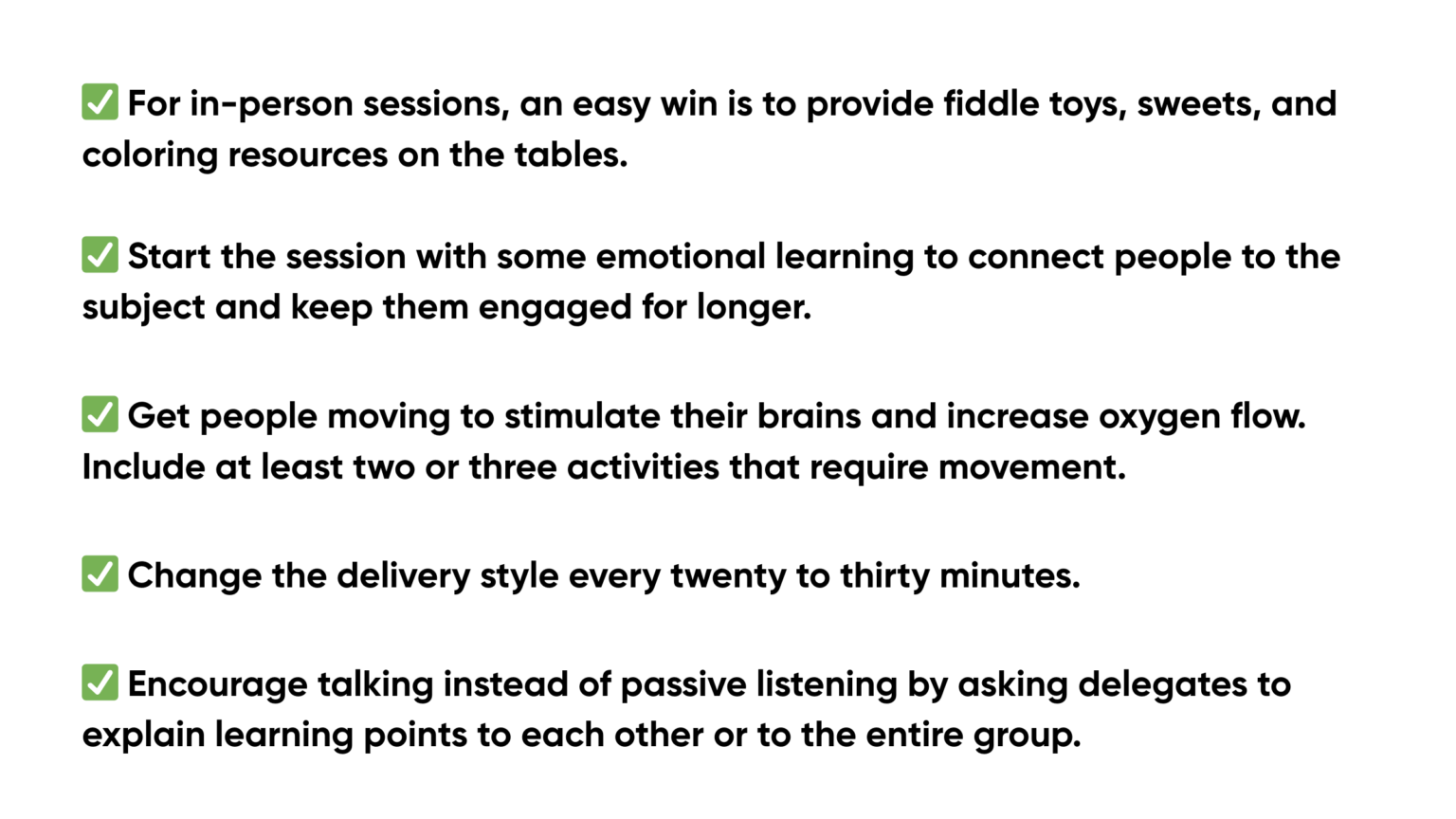
Tip Six: Implement Learning Principles in Your Course Structure
You can also start to structure your training courses with accelerated learning principles in mind.
In our recent webinar, How to Grow Your Training Business, Scott D’Amico shared an example of how he does this through applying the Learn, Practice, Apply, Methodology, within training sessions.
As the name suggests the Learn, Practice, Apply methodology is one that aims to make sure training is practical, rather than just theoretical, and is all about helping delegates practice the new skills they are learning, and giving them opportunities to apply them in real-world, relevant situations.
Scott recommends trying to give your delegates something practical they can bring to each training program to work on.
For example, in the pre-work assignment for Communispond’s executive presentation skills training program, students are asked to bring an example of a presentation they frequently deliver, an upcoming meeting they’re preparing for, or an important email they need to send.
In the training session, the example the delegate brings will then be the subject that the techniques the facilitator teaches are applied to.
To really help the delegate’s understanding and skills development, the facilitator applies in-the-moment coaching, which involves providing feedback and guidance during the actual execution of a skill or task, rather than after the fact.
Scott shares an example of this from his experience teaching presentation skills classes
“If somebody is getting ready to present, and they have their hands in their pockets, or they’re shifting or mumbling, the instructor can stop them, remind them of what they’ve learned and have them pick it up and re-do it, to see if they can apply the skills they’ve learnt”.
Watch the full webinar below to learn more about the Learn, Practice Methodology and for more expert guidance on how you can grow your training business.👇
Part Three: Tailored
The third part of the methodology involves ensuring that the training you deliver is tailored to your delegates, the client you’re providing training for, and other specific factors, such as the values of your training organization.
The benefit of tailoring your training is that it ensures the sessions you deliver are relevant to the personal situations of your delegates or their roles. As you read this section, you should begin to see how the different stages of the methodology layer and build on one another.
For example, creating engaging training becomes easier when a facilitator has relevant operational experience paired with the relevant soft skills, and when a facilitator has an awareness of what they need to do to make their training engaging, it becomes much easier to create training that’s tailored and relatable to delegates.
Tailoring, though, goes beyond simply relating the material to your delegates.
To truly tailor your training content, you must deeply understand what delegates want to achieve from a training session (aligned with the set learning objectives) and, as we’ve mentioned a couple of times, include real-world examples and scenarios that reflect their specific experiences and challenges.
Achieving this involves engaging with your delegates beforehand to gather insights about their backgrounds, motivations, and current skills.
For example, say you’re running a leadership training course, and the content of the training contains a lot of theoretical concepts about leadership styles and team dynamics. But after delivering the session, you get feedback from a delegate that, while they found the material interesting, they found themselves thinking, “How does this apply to my day-to-day work?”
Now, imagine that you take the time to survey your delegates during the learning design process and ask them what specific leadership challenges in their day-to-day work they need assistance with. A few delegates respond that they need tips on how to keep their team motivated when they have a tight deadline for an important project coming up.
Knowing this information, you can ensure that the examples and case studies you use within the training session address the situation and provide delegates with actionable tips and techniques they can apply in their day-to-day work when they encounter similar challenges.
If you don’t have direct access to the delegates, you can still ask your client for relevant information. This process can start as soon as you receive an inquiry from an organization seeking your training services.
Tammy recommends that, when an inquiry comes in, you take the time to gather as much key information as possible about the organization making the inquiry.
You can do this by asking questions that delve into who the organization is, what they do, and why they are seeking your services.
Example questions you can consider asking are:
- Why is the organization booking the training?
- Who will be attending (what are their roles and responsibilities, etc.)?
- What is the organization’s current context? For example, where are their customers based, where does the company operate, and what services do they provide?
- Who are the organization’s current customers?
- What are the organization’s mission, vision, values, aims, objectives, and challenges?
- Are there any particular issues that have caused the organization to start seeking our training (e.g., knowledge gaps or the need to train new employees)?
- What kind of services do they require, and what form of training are they interested in (e.g., in-person, virtual, or blended format)?
Once you’ve gathered this information, you should have everything you need to develop a highly customized training proposal.
The proposal should provide an overview of the brief and detail what the training will entail. It should also explain how the training will not only meet but exceed the brief.
Outline how the training will deliver real value. This includes not just the requested subject matter but also how it will equip delegates with actionable, practical knowledge they can apply in real situations, alongside theoretical insights.
You can also use the information provided by the organization to begin tailoring the course content.
This may not apply to the entire course, as you may already have the bulk of the content developed. However, you can use the insights you’ve gained from your prospective client to tailor the examples, case studies, and statistics included in the course.
Other tips to tailor your training include:
- If you deliver training in industries where legislation and policy can affect the content, make sure you’re staying up to date with any changes and including them in your course material. You can also link relevant policies to the examples and case studies used in a course or session.
- Always ensure that you get clear goals or objectives for the course from both those arranging it (the organization) and those who will be attending (the delegates).
- If you know the specific roles of participants, integrate role-specific examples that reflect their everyday challenges. For example, in a leadership course with attendees from finance and marketing, include scenarios that address situations common in each field.
- Incorporate a real-time problem-solving segment where participants bring their current challenges to the session for group input and solutions. For example, a manager facing communication issues could present their situation, and the group could brainstorm solutions that align with the course content.
- Design a follow-up plan to support participants in applying what they’ve learned after the course. For instance, encourage them to set specific goals—such as trying out a new feedback technique—and schedule a follow-up check-in a few weeks later to discuss their experiences.
Part Four: Values
The final part of the Training 4 Influence Methodology is values. These are the core beliefs and needs that shape all areas of life.
In training, embedding a set of values creates a foundation for ethical decision-making throughout the entire process, from design to delivery. It also fosters a positive and inclusive culture between facilitators and delegates.
Often, these values come from the personal values of the facilitator, the values of the organization they’re representing, and the values of the client they’re serving—often a combination of the three.
Taking the time to think about values helps training providers and facilitators develop greater empathy for delegates and use this empathy to help them change their behavior more successfully.
Here are some tips you can take to start the process of embedding values into your training 👇
Identify your values
It’s not often that we sit down and consciously think about our values, but doing so can be insightful. When Tammy, for example, reflected on her own values, she found it enlightening to put a name to them and list them.
These values would then go onto become the values of Transform Your Training, which are:
- Integrity
- Fairness
- Honesty
- Safety
- Commitment
You may have already gone through this process. After all, if you’re a facilitator working in a sector that matters personally to you, there’s a strong chance you were drawn to the work or the training because of your values, even subconsciously.
If you’re a facilitator looking to reconnect with or clarify your values, start by reflecting on your why. Why were you drawn to work in this sector? Why do you deliver training?
When Tammy asked her facilitators about their why, she received inspiring responses that might resonate with you, such as:
- “Helping people realize what they’re capable of.”
- “Giving back to a sector that changed my life.”
- “Empowering people to deliver life-changing services.”
Taking the time to explore these questions can provide valuable insights into your motivations and help you align your work with your core values.
You can also use this exercise to help your delegates understand their own why.< Tammy’s facilitators ask each learner at the beginning of every training session what their why is. This helps them uncover—or rediscover—and explore their reasons for doing what they do.
Facilitators can then use this information, when needed, to help delegates reignite their passion, particularly if the training they are delivering is focused on a delegate’s professional role.
“When you’re a facilitator, there really is nothing better at the end of a training session than having a delegate thank you for reminding them of why they love their job”.
Consider The Organizations Why
Another important aspect of the facilitator’s role is helping delegates recognize the synergy between their personal values and those of the organization they are delivering training to.
Most organizations have a vision, mission, and values. For some, these may remain static on the website, while for others, employees actively live and breathe these values.
Regardless of how seriously an organization takes its values, there are two key reasons why it’s critical to understand the organization’s mission, vision, and values before creating a training proposal and designing a course.
The first reason is that it allows the facilitator to connect to these values throughout the training session, helping the organization embed its values and clearly communicate its purpose and direction to delegates (in most cases, the organization’s employees).
The second reason is that understanding these elements makes the training more effective by providing the facilitator with a clear understanding of the organization’s goals and the key behaviors it values.
When facilitators understand the client’s goals and values, they can shape the training to promote the specific behaviors and mindsets the organization values most.
For example, if a core value of the client is “excellence in service delivery,” the facilitator can emphasize what this looks like in practice and help participants understand how it applies to their roles. This also helps employees feel recognized and valued, boosting their motivation and commitment.
If the organization’s values and vision aren’t yet deeply embedded, tailored training can help establish them as part of the culture. On the other hand, if the values are well-established, integrating them into training reinforces their importance and increases engagement.
By embedding the client’s mission, values, and vision into every aspect of the training, the session becomes more relevant and relatable for participants, leading to greater learning and satisfaction.
Integrating A Proven Methodology Into Your Training
The power of a reputable training methodology lies in its ability to provide a set of guidelines and principles that can be applied at every stage of the training process, from design to delivery.
The results of implementing a methodology can be truly transformative—not only for delegates but also for your training business. Take Tammy and Faye’s business Transform Your Training as a prime example. Since its founding in 2017, the business has grown fourfold, with the Training 4 Influence Methodology playing a key role in this success.
This growth has enabled Tammy and her team of facilitators to deliver more impactful training to professionals in frontline service professions, including industries such as health, social care, and education.
Beyond business growth, the methodology’s impact has been profound in other areas. In 2023, Transform Your Training, formerly known as Taye Training, received The Princess Royal Training Award. This prestigious award honors employers who have created outstanding training and skills development programs that deliver exceptional benefits.
The Training 4 Influence methodology was also the focus of Tammy’s recent TEDx Talk, How Values-Led, Quality Training Has the Power to Transform Lives.
In the talk, she delves into the most important lessons she has learned throughout her career in frontline services, training thousands of frontline service professionals, and explains how the Training 4 Influence methodology can transform the learning experience for delegates.
If you’re a training provider looking to implement the methodology into the training you offer, you have several options.
First, we encourage you to pick up a copy of Tammy’s Amazon bestselling book, Transform Your Training: Develop and Deliver Training That Changes Lives in the Criminal Justice, Social Care, and Charity Sector.
The book covers each step of the Training 4 Influence Methodology, and Tammy goes into great detail about how you can implement each step of the methodology into your training and overlay it onto any training course, regardless of the subject.
Second, we encourage you to join Tammy’s free Transform Your Training community, where you can network and connect with other values-led training facilitators. You can also ‘score’ the current training you offer against the methodology in this free assessment, and upon completion of the assessment you’ll receive a free report detailing how your training currently stacks up against the methodology.
Third, if you’re a training provider who wants to upskill their facilitators or an individual facilitator and want to learn the Training 4 Influence methodology firsthand from Tammy and her team, consider applying for Transform Your Training’s Train the Trainer program.
The program runs for 12 weeks, and you’ll learn step-by-step from Tammy and her team of facilitators exactly how to implement her methodology into the training you offer.
Upon passing the course, you’ll receive an accreditation to demonstrate that you have been trained in the methodology.
Chapter 3
The Technology You Need to Deliver Instructor-Led Training
When you have a strong foundation of building a team of training facilitators who have operational expertise, know how to deliver training that is engaging, tailored to clients and delegates, and is values-led you then need to make sure that the operational side of your training business is running smoothly.
And that your facilitators aren’t bogged down with manual tasks and processes such as:
- Sending out emails, generating invoices, updating your website, or reporting on your training operation manually.
- Inputting the same information into multiple systems.
- Using spreadsheets to record registrations and course bookings, track attendance, or manage tasks.
- Manually updating course details, such as time, date, or location changes, and notifying registrants manually.
- Potentially making avoidable human errors due to the volume of calculations or manual processes involved.
The most effective way to make sure they’re not is to have a robust training tech stack in place, that takes care of your training admin, and training management processes so that facilitators can spend their time designing and delivering great training.
Introducing Arlo Training Management Software
And that’s where Arlo comes in. Arlo is a training management system built specifically to help instructor-led training providers deliver more training, and grow their business.
Arlo does this by containing a full suite of features that reduce the amount of time it takes to manage training processes at every stage of the operational process.
Course Creation and Scheduling
Arlo’s course creation and scheduling features mean a user can create, upload and schedule a course in just a few clicks. Arlo has a library of course templates suitable for face-to-face, live-online, blended and elearning courses.
Templates pre-fill with key information, and you can set can set the duration of your course, dates, and all the logistical details, such as location, whether that’s an in-person location, or a virtual location e.g. a Zoom classroom, pricing information, course structure, the instructor and more in a single workflow.
Registrations and Payments
When your course is set up and all the logistics are arranged, you can set up your registration forms and roles. You can choose which kind of registration form you want to use relevant to the type of course e.g. whether it’s a paid or free course.
These forms automatically add or sync customer data, support multiple registrants and courses per order, and include rules for screening, waitlists, and registration limits. They also offer flexibility for discounts, additional courses, and merchandise.
Registrants will automatically receive an email upon completing their registration, with full details of the course they’ve signed up for.
Payments can be processed through various systems, and historical order management is streamlined. Flexible payment methods, including credit card, invoice, and bank transfer, are supported, along with integrations for accounting systems like QuickBooks and Xero.
Transfers, cancellations, and refunds are handled efficiently, with built-in tools for updating orders, processing refunds, and sending notifications to customers. Registrants can also self-manage cancellations and transfers.
A self-service customer portal is also provided, branded to match your company’s identity, providing registrants with access to course materials, certificates, and personal information management. Through the portal customers can also manage bookings, including cancellations and transfers, without administrator intervention.
Task and Communication Management
All of your training tasks and communication can be managed through Arlo. Tasks can be created and attached to course templates, assigned to administrators, and automatic reminders sent.
Calendar views for courses, instructors and venue availability are available to help manage courses, instructor availability, and venue scheduling, while key information like contacts and room setups can be accessed quickly.
Communication can also be set up and automated across various stages of the learner journey. Pre-set email templates can be customized, and automated messages can be sent for course registrations, payments, reminders, surveys, and certificate delivery.
Notifications for instructors and participants can also be set up and triggered based on conditions like waitlists and instructor availability.
While the Arlo app makes it easy for instructors to manage course details, record attendance, and track payments on-the-go.
CRM & Real-time Reporting
Within Arlo you’ll find all the tools you need for managing customer relationships and reporting on your training business. Dashboards within the platform offer real-time visibility into upcoming courses, registrations, revenue, and order trends, allowing users to track and manage training operations efficiently.
Training customer relationship management (CRM) features, allowing users to store and manage contacts, track course activity, and capture leads. And access customer documents and certificates whenever they need to.
Marketing tools enable targeted campaigns to increase registrations, track leads, and measure ROI. You can build smart lists based on course activity or custom fields, send emails to promote courses, and gather feedback through automated surveys. Arlo, for example, integrates with external tools like Google Analytics, Mailchimp, and SurveyMonkey.
Arlo’s reporting tools provide comprehensive insights into registration, course performance, financial metrics, and lead management.
Registration reports track data such as attendance rates, registration trends, and course completion rates, with granular details like waiting lists. Course reports monitor course performance through metrics like participant satisfaction, engagement, and course profitability.
Order reports analyze financial performance, including revenue, profitability, payment details, and discount impacts.
Presenter, contact, and organization reports focus on tracking attendance, presenter activity, and organization profiles. Lastly, lead reports enable sales teams to manage and analyze leads, track conversion rates, and generate custom exportable reports, ensuring no opportunity is missed. All reports are customizable with advanced sorting, filtering, and export options.
Reports can also be scheduled for automatic delivery to stakeholders and customized to track specific metrics such as registrations and revenue.
Create elearning Modules With Arlo’s elearning Authoring & Delivery
As we mentioned earlier, elearning modules often make up part of blended courses, and you’ll need elearning authoring software to create your self-paced modules or courses.
Elearning authoring software is used to design, develop, and create engaging and interactive econtent, such as quizzes, videos, and simulations.
Here at Arlo, our new AI powered elearning authoring tools mean you can easily easily create elearning courses or modules in just a few minutes.
Quickly transform materials into engaging, customizable content and integrate courses into your website to boost learner engagement and registrations.
Generate interactive courses in minutes, manage all formats in one place, and deliver responsive, modern experiences for standalone elearning, multi-session workflows, or blended modules.
Elearning courses can be customized with layouts, branding, and pre-built themes, image libraries, and quizzes. Once you’ve created your elearning courses or modules you can host them within Arlo, and organize them within a blended course accordingly.
Arlo + Zoom for Virtual-Instructor Led Training
If you already, or plan on delivering virtual instructor-led training then you’ll need a platform that makes delivery easy and scalable. Often this can be as simple as using a video conferencing platform like Zoom.
Many training providers though find that they want to integrate the platform they use to manage training e.g. a training management system with a platform like Zoom to keep everything under one roof.
Arlo integrates with Zoom so our customers can do exactly that. Simply choose your host and date, and Arlo takes care of the rest. It automatically schedules the session, adds the join links to emails, and handles any changes you make.
Zoom easily allows you to create connected environments from anywhere. Share resources, chat, use a virtual whiteboard or use separate breakout rooms. Not using Zoom? No worries! Arlo also integrates with a wide variety of web conferencing software, such as Microsoft Teams and GoToWebinar.
A Dedicated Training Website
While a website is not a platform, it’s such a key part of any successful training business that it needs pointing out.
A dedicated training website is your storefront for getting your courses in-front of your customers, and you have a few options available for creating a great training website, or improving your existing site.
If you have an existing WordPress website, course plugins are a great way to add additional functionality to your existing site. Arlo’s WordPress course plugin, for example, helps you promote face-to-face, live online, public and private courses on your website, keeping information up to date in real time.
Delegates can register, checkout and make payment online, then automatically receive confirmation and detailed course information straight to their inbox. The course pages, widgets, and checkout blend seamlessly into your existing website theme, brand colors and fonts, to ensure a great experience for your customers.
When you have the plugins installed, and you create a new course within Arlo you can publish it to your website within the same workflow.
Don’t have a website yet? Arlo’s out-of-the-box website is designed specifically for training companies and will have you selling courses online, fast.
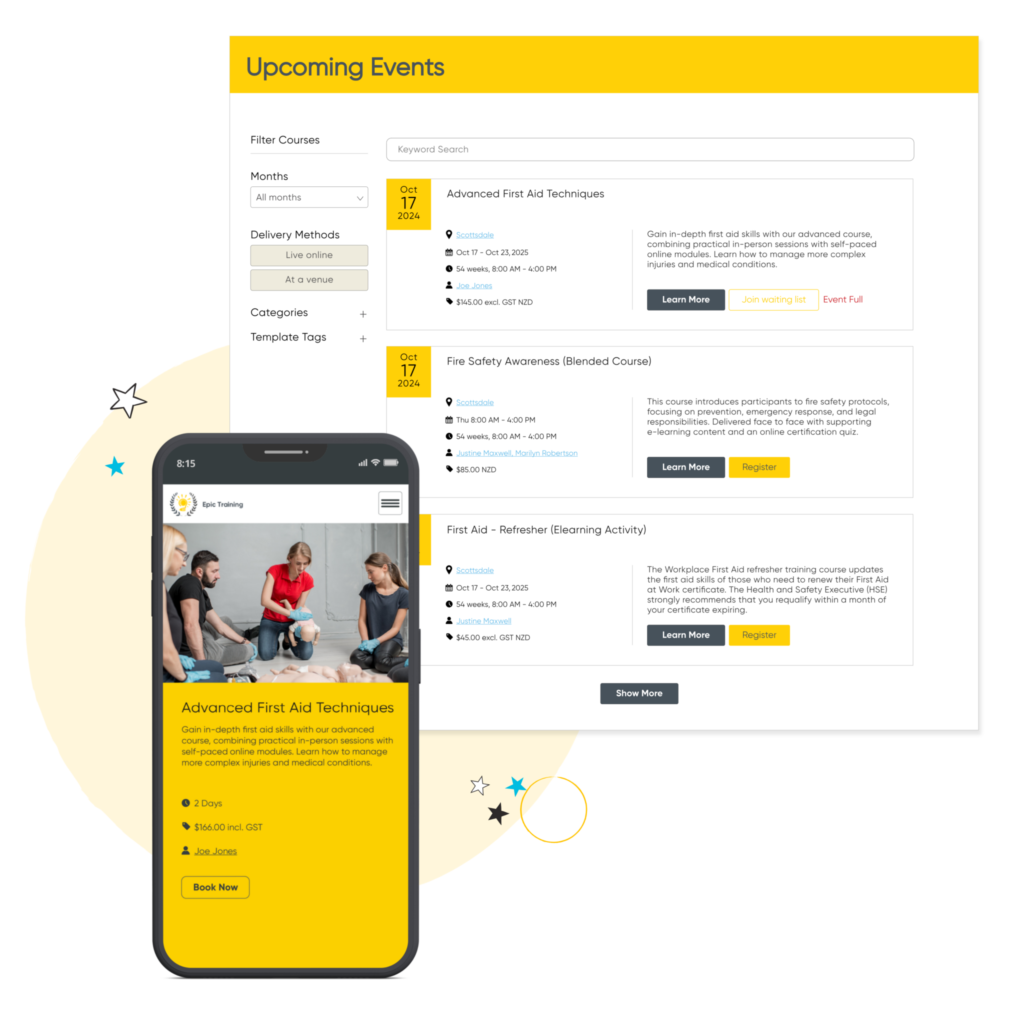
The Results You Can Look Forward To
At Arlo, we’ve helped thousands of training providers sell and deliver more training, while automating their training management processes, including Tammy’s very own Transform Your Training.
When Tammy was searching for a solution to her manual training processes, a business consultant recommended Arlo, and it proved transformative. Before Arlo, Taye Training handled all their administration manually, including attendance sheets, evaluation forms, certificates, invoices, and communication with learners, facilitators, and organizations.
This already time-consuming process became overwhelming during the shift to live online training during Covid-19, as additional tasks such as setting up Zoom sessions and sending out joining instructions added to the workload.
Adopting Arlo helped Tammy significantly increase the amount of time these tasks take. Tasks like course setup, sending joining instructions, contacting delegates, and issuing certificates now take minutes instead of hours.
This combination of Taye’s values-led training, the T4I methodology, and Arlo’s training management system has fueled remarkable growth.
Tammy’s business has quadrupled in size, reached thousands more delegates, and maintained its mission to provide accessible, affordable, and high-quality training for organizations in the criminal justice, social care, and charity sectors.
“We have grown the company x4 since using Arlo and have thousands more delegates. Part of this is due to now delivering national tenders for public services which we couldn’t do without a training management system.”
Instructor-Led Training - The Final Word
It would be impossible to cover everything that goes into delivering great instructor-led training in one guide, but you should now have a solid overview of the trends to stay aware of and some of the key steps you can take to improve the training you deliver.
As a reminder:
- Instructor-led training should be delivered by facilitators with relevant operational expertise in the subject they are teaching and strong soft skills.
- Steps should be taken during the training or learning design process to ensure the session is as engaging as possible.
- Training should be tailored to the needs of the delegates and the client.
- The values of the training provider, the facilitator, and the client should be carefully considered during the training design process to ensure the session aligns with and reflects these values effectively.
- You need to have a robust training tech stack in place that automates manual instructor-led training processes, so facilitators have enough time to focus on designing and delivering great training.
If you can nail all of these areas, your training business will be in a position to thrive. You’ll have a team of instructors who have operational experience and the relevant soft skills to connect and engage delegates.
And a robust training tech stack that takes care of manual training operations, helps you sell more courses, and, most importantly, empowers your facilitators to deliver more life-changing learning.
Ready to Discover the #1 Platform for Creating, Delivering and Selling Instructor-Led Training
Try Arlo for free for 14 days to see how it could streamline and grow your training business.